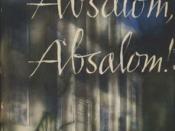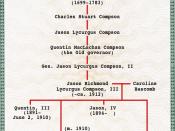William Faulkner's fourth novel, The Sound and the Fury, is a haunting and sometimes bewildering novel that surprises and absorbs the reader each time it is read. The novel was Faulkner's personal favorite and, along with James Joyce's novel Ulysses and T. S. Eliot's poem The Waste Land, is generally thought to be one of the greatest works of literature in English of the twentieth century. The Sound and the Fury also signalled the beginning of the "major period" of Faulkner's own literary creativity; four of the five novels that followed--As I Lay Dying, Sanctuary, Light in August, and Absalom, Absalom!--are, along with The Sound and the Fury, often regarded as the best in Faulkner's oeuvre. Not surprisingly, the novel has received an extraordinary amount of critical analysis, much of which has been devoted to explaining Faulkner's technical experimentations. Critics have also widely discussed Faulkner's treatment of issues such as race, suicide, incest, time, history, and religion.
Central to any reading of the novel, however, is the character that Faulkner claimed was his source for the novel--Caddy. Richard Gray has described Caddy as the novel's "absent presence" and each of the four sections as "another attempt to know her." But to the reader, Caddy remains an elusive mystery whose enforced silence prevents her from ever being known. To her three brothers, she is a source of obsession and irritation that cannot be forgotten or overcome.
The Sound and the Fury explores the breakdown of the familial relationships that lead to the Compson family's tragic deterioration. Few readers would disagree that the family's demise is indeed tragic, but the precise reasons for the downfall are still debated. David Dowling has suggested that the tragedy of the Compsons is that they are slaves to themselves and to the past. This argument...


